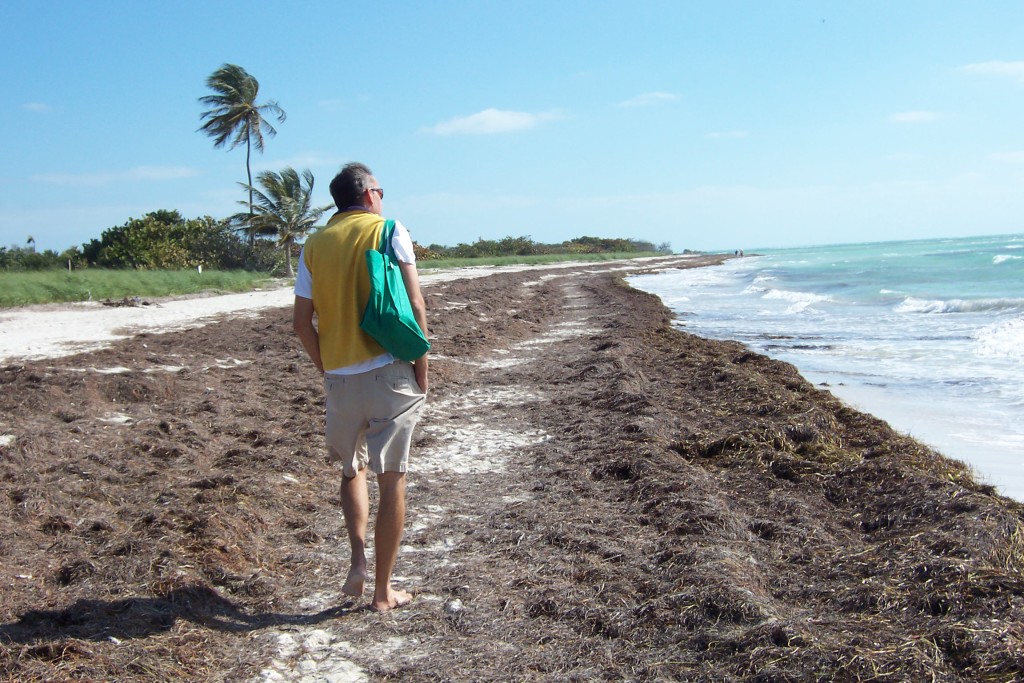 I am not the only one who has experienced this. In my mind I was still an athletic 185 pound football player from my high school glory days, but the mirror mirror on the wall said I was a middle-aged man that was a full 60 pounds heavier. This increase in size brought with it the typical symptoms: fatigue, shortness of breath, inflammation, joint pain, alarming blood chemistry profiles, and regular lectures from my doctor at annual physical time. I was not happy being at that point and was a little mystified that I had allowed this to happen to me.
I am not the only one who has experienced this. In my mind I was still an athletic 185 pound football player from my high school glory days, but the mirror mirror on the wall said I was a middle-aged man that was a full 60 pounds heavier. This increase in size brought with it the typical symptoms: fatigue, shortness of breath, inflammation, joint pain, alarming blood chemistry profiles, and regular lectures from my doctor at annual physical time. I was not happy being at that point and was a little mystified that I had allowed this to happen to me.
This topic is very controversial in our society right now, and I understand why. Many people (especially women) struggle with eating disorders born of a preoccupation with the way they look. This preoccupation has been stoked by the “ideal” body image constantly portrayed in film, television, magazines, and all types of advertising. This image is one of extremely low body fat. Thin is in. If you are not thin, you can feel serious societal pressure that something is not right with you. A certain percentage of people become so fixated on trying to achieve this ideal image that they go to extreme measures (e.g.: anorexia, bulimia, excessive exercising). These disorders have devastating consequences up to, and including, death. This is serious business.
So, my objective here is not to contribute to negative body image at all. When I decided to make some changes it was not to achieve six-pack abs or to return to my exact 17 year-old body. I decided that I did not like the way I felt or the health condition I had created. Extrapolating forward, I was concerned about what my health would be like in ten or twenty years. I did not like my trajectory. My Forward Story with regard to my health needed a serious re-write.
My objective is simply to share what I have learned in the hope that it may provide help for anyone who may be at the same point I was. The objective is for all of us to achieve good health, not for us to all look like the cover of a fashion magazine. Before I get into my personal journey and the details of what I have done, let me just state that I have lost 50 pounds. I now weigh exactly what I weighed when I was married nearly 35 years ago. I still find that hard to believe. While weight loss is the most easily measured aspect of this, please understand that the 50 pounds I have shed are really just a symptom of the good health effects that I am now enjoying.
I am convinced that anyone can do what I did. While it may not be easy, it will be a lot easier than you think in some ways and will be difficult in ways that you probably do not expect. My purpose in writing this series is not to sell a diet or to offer a quick fix. I simply hope to share what has worked for me in the belief that it will offer lasting help to some who may need it.
Have you ever looked at photos of people from the 1930s to 1950s? I have seen photos of spectators in stadiums at sporting events from that era. The surprising thing is that there are not very many obese people in those photos. At that time Americans as a whole appeared to be very fit. A photo today at a sporting event reveals that we no longer look like our grandparents did. In large numbers we have gone from fit to obese in six decades. I went from fit to obese over a period of thirty-two years.
What Caused This?
I am not a doctor or a nutritionist so it was important for me to do a lot of reading and talking with those types of people to really understand why I had added all that weight and to figure out what to do about it. If you are a doctor or nutritionist, I hope you will bear with my rather elementary grasp on these concepts and terminology. I am going to explain this in my own way from my own understanding of the way the body works. Any inaccuracies are my own. I am also aware that there are many competing theories about the best way to accomplish weight loss and higher levels of fitness. All I can testify to is what I have learned and experienced so far.
I am going to start with nutrition. I definitely believe that exercise is important, but for someone who needs to lose significant weight, exercise is very difficult. We will get to exercise later, but let’s first start with our food.
We will break this series into six parts:
- The Digestive System (this post)
- How Does Food Get Absorbed?
- The Role of the Large Intestine
- Hormones, Metabolism, and Fat Storage
- Food Choices & Culture
- My Personal Weight Loss Path (How I did it)
- Exercise and Activity
- Recommended Reading
Alimentary Canal
Your digestive system is actually a long tube. It is referred to as the alimentary canal. What you put in your mouth eventually gets eliminated at the other end after a journey of around 12 hours. What happens in this tube remains a mystery to a lot of people. It must remain a mystery no more if we plan to shed our excess weight and get fit. It is what your body does in that nearly 30 foot-long tube with the food you give it that determines your weight. The word “alimentary” refers to the function of nutrition. So, the alimentary canal is your nutrition tube. If you want nutrition, it’s got to happen inside that tube.
How Does it Work?

Blausen.com staff. “Blausen gallery 2014”. Wikiversity Journal of Medicine. DOI:10.15347/wjm/2014.010. ISSN 20018762. (Own work) [CC BY 3.0 (http://creativecommons.org/licenses/by/3.0)], via Wikimedia Commons
Mouth & Esophagus
What happens to that cheeseburger when you eat it? The first thing is that it gets broken down into little bits in your mouth as you chew it, and it is mixed with the first digestive juice in the process: saliva. Not to gross you out, but when your cheeseburger leaves your mouth as you swallow, it no longer looks like it did when you held it in your hand. It has been transformed into a form of slurry that is ready for the trip down the esophagus. Your swallow takes it into your esophagus where strong muscles in the walls move it into your stomach.
Stomach
Your stomach is a muscular bag about the size of your fist. It expands to accommodate a higher volume of food when we stuff too much food in our mouths. The stomach’s purpose is to take that slurry delivered by the esophagus and really work it over. Remember, the purpose of this tube is alimentary: it is about nutrition. The stomach plays an important role in preparing the food to be able to provide nutrition. To that end, the stomach contains digestive acids and enzymes that further break the slurry down into smaller particles. Typically, food that you eat stays in the stomach about one hour. No nutritional absorption takes place in the stomach (well, apparently a few things can be absorbed here, but its mostly water, aspirin, amino acids, and some alcohol). The stomach simply prepares it for absorption at the next stop. The food then exits the stomach and is moved into the next part of the nutrition tube – the small intestine.
Small Intestine
The small intestine is the next stop for the digested food. It is a coiled tube approximately 11 feet long. Now that the mouth, esophagus, and stomach have done their jobs, it is in the small intestine that most of the nutrients available in the food are now absorbed. By absorbed, I mean those nutrients find their way outside the tube. How does this happen? The pancreas excretes fluid that neutralizes the stomach acid, and the liver secretes bile to break down the fats. The inner lining of your small intestine is not smooth like Kansas, but mountainous like Colorado. All of these small microscopic peaks (called villi) greatly increase the surface area of the small intestine for nutrient absorption. Actually, these little peaks are more worm-like than mountain-like, but you get the idea. The system is amazing in that it allows the nutrients to pass through the walls of the intestine and into the bloodstream, but it does not allow harmful waste materials to be absorbed into the body. Those materials continue down the tube. The second part of this series will deal more with how these nutrients are absorbed and where they go once they are “in.”
Large Intestine (Colon)
Your food remains in the small intestine for about an hour and a half before it moves into the large intestine, also known as the colon. The large intestine is only about 5 feet long, so compared to the small intestine (11 feet) it is not “large” in length, but only in diameter. In the large intestine the liquids are extracted and the complex carbohydrates are broken down by the action of your microbiome, which is the microscopic “good bacteria” that lives in your colon. As strange as it seems, these trillions of bacteria are very important to your health. When you take a probiotic supplement, this is the colony that you are building. I am still learning the many ways that this gut microbiome contributes to health. As it turns out, your brain is wired into your gut and there is a relationship between your brain and your gut. When all of the liquids are removed, the waste forms into a stool which is then expelled from the body.
Now that we have taken a very brief look at the alimentary canal, in Part Two we explore how nutrients actually escape the Nutrition Tube and get used by the body as fuel.
 Saturday is a good day to recap the activity from our Twitter feed from the past week. Not sure what Twitter is all about? That’s OK. Neither are we (or at least it remains somewhat mysterious to us). There is no denying, however, that there is some very valuable information shared on Twitter. That is what this weekly feature is all about. Click the links below to check out the good stuff. Here are my Top Tweets from this past week, great for retweeting (whatever that is). If you missed these, follow Forward Story on Twitter.
Saturday is a good day to recap the activity from our Twitter feed from the past week. Not sure what Twitter is all about? That’s OK. Neither are we (or at least it remains somewhat mysterious to us). There is no denying, however, that there is some very valuable information shared on Twitter. That is what this weekly feature is all about. Click the links below to check out the good stuff. Here are my Top Tweets from this past week, great for retweeting (whatever that is). If you missed these, follow Forward Story on Twitter.




